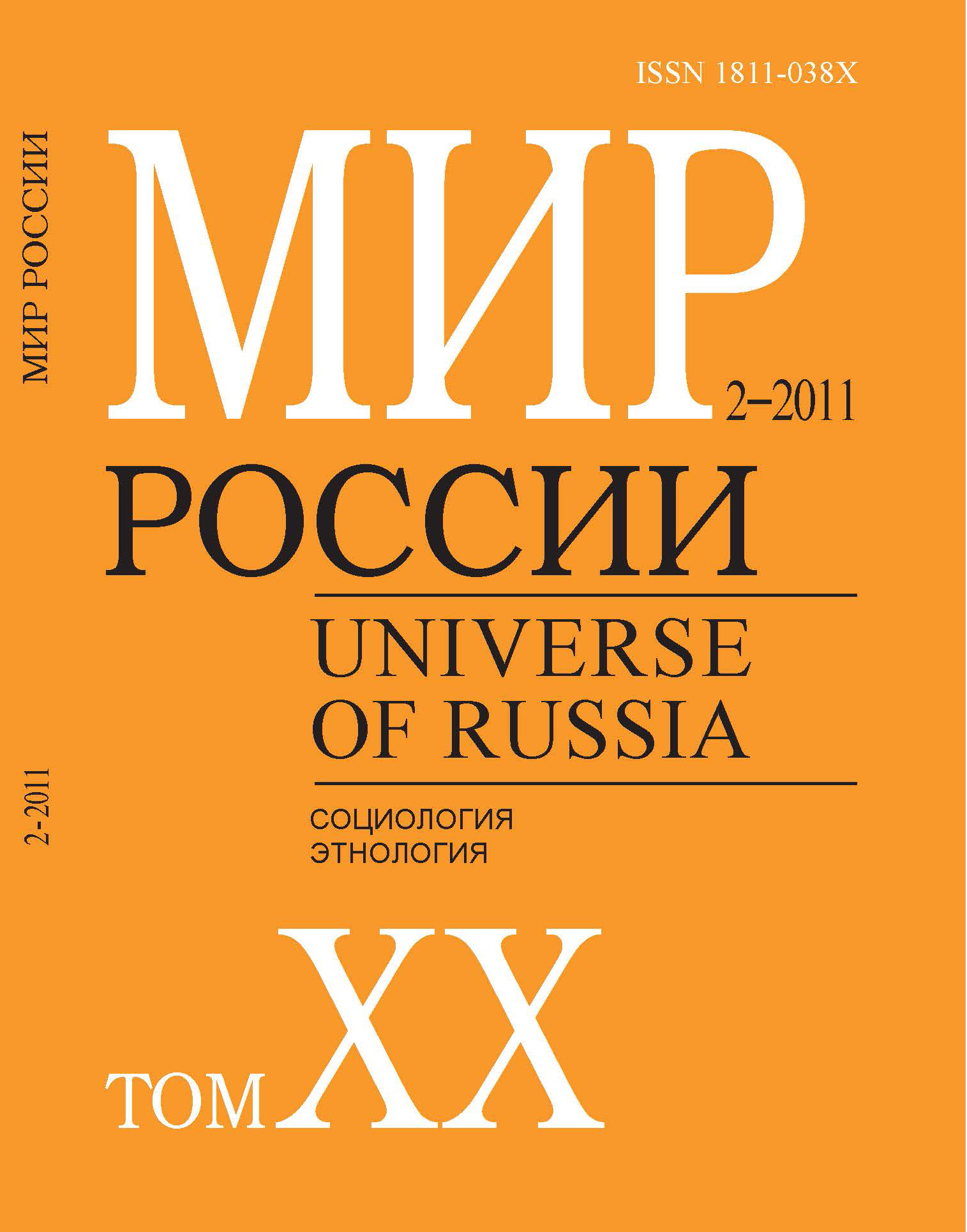Comparing Humane Dimensions of Modernization (according to the results of the 3rd round of the European Social Survey 2006)
Abstract
Nikolay Lapin — Head of the Socio-Cultural Change Research Centre, Philosophy Institute, Russian Academy of Sciences. Address: 14/5, Volkhonka St., Moscow, 119991, Russian Federation. E-mail: lapin@iph.ras.ru
The politician who sees nothing but the technical and economic essence of modernization takes unnecessary risks. In fact, there is an integrated solution to the political, economic, social and cultural problems which Russia is about to face in the context of internal mega-regional and global threats and risks.
Many people across the world, including Russians, compare the quality of their life with respect to people from other countries and react accordingly: adapt or protest, slip into alcoholism or drug addiction, murder or commit suicide, emigrate, etc. The severity of the problems faced by politicians and common citizens depends on the humane dimensions of modernization (or their absence).
What are these dimensions? What shapes do they take in Russia as compared to other European countries? What is the best strategy of modernization in Russia? The author attempts to answer all these questions while supporting the concept of integrated modernization, which includes industrial, informational and socio-cultural as its humane dimensions. The empirical part of the research is based on the results of the European Social Survey (3rd round, 2006), which took place in 25 European countries, including Russia.
The author identifies seven parameters related to the humane dimensions of modernization in 25 countries: 1) satisfaction with life as a whole; 2) adequacy of income for life; 3) agreement with occupation being the most important area of life; 4) women’s age at the birth of the first child; 5) the state of advancement of the social structure; 6) democratization of political culture and behavior of citizens; and 7) modernity in value orientations. The significance of each parameter is reduced to a 5-point scale.
The 25 European countries are separated into two distinct clusters: those currently undergoing modernization and those already modernized. The first cluster includes 13 countries with at least one parameter having a value below 3.0 (on a 5-point scale); the average value of all their parameters equals 2.6. These countries are further divided into three groups: the ones at the beginning of their modernization (Bulgaria, Ukraine, Russia); the ones extensively modernizing (Romania, Hungary, Latvia, Portugal, Slovakia, Estonia, Poland); and the ones modernizing intensively (Slovenia, Cyprus, Spain). The second cluster consists of 12 countries, all with parameters having a value of 3.0 points and above; the average value of their parameters is 4.2. There are two groups in this cluster: the most economically powerful, but less efficient in the socio-cultural sense (France, England, Germany); and the economically less powerful but outstanding in the socio-cultural sense (Belgium, Austria, Ireland, Netherlands, Norway, Finland, Sweden, Denmark, Switzerland).
The author also refers to the recent data gathered by Chinese researchers on the modernization processes in 131 countries, including Russia and, most notably, China. According to these data 25 European countries are divided into three groups (industrial, informational and integrated) and further described in terms of modernization cycles with a forecast up to the year 2100.
In the final section of this article, the author discusses Russia’s possible choices for its post-crisis trajectory: further stagnation or integrated modernization with a humane dimension. The author also attempts to outline the socio-cultural logic of movement towards an integrated modernization: from mutual distrust of its potential actors to coordination of their efforts in order to efficiently produce institutional, technological and productive innovations. The rational start of this movement could be considered the first step towards modernization and the achievement of European standards with respect to humane dimensions. Only then can Russia seek to achieve the status of a modernized country.






